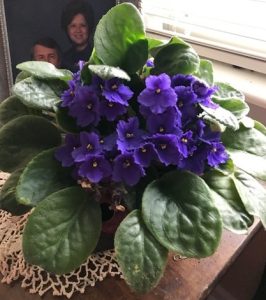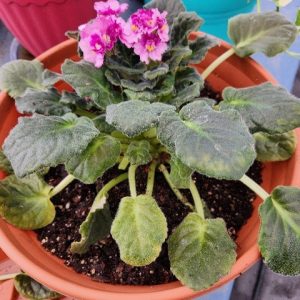Caring for African Violets: A Guide for Enthusiasts
African violets (Saintpaulia ionantha) are beloved houseplants known for their vibrant blooms and ease of growth indoors. Since their introduction to the United States, they have become favorites among plant enthusiasts for their adaptability and stunning flowers, making them staples in homes and offices. African violets thrive in bright, indirect light and moderate temperatures, and they come in various flower colors, including pink, purple, white, and combinations of these hues. Here’s how to ensure your African violets thrive with proper watering, fertilizing, and propagation.
Watering
The quality of water is crucial for African violets. Use water that is safe for drinking, making sure it is at room temperature or slightly warmer to avoid causing yellow spots on the leaves. The watering needs of African violets vary based on soil mixture, drainage, light, temperature, and humidity. For example, clay pots require more frequent watering than plastic pots due to higher evaporation rates. Water your African violets when the soil surface is dry to the touch or if wilting is noticeable.
There are two methods to water African violets: top watering and bottom watering. For top watering, apply enough water to saturate the soil and discard any excess that drains out. For bottom watering, place the pot in a container with about an inch of water. Once the soil surface becomes moist, remove the pot, let it drain, and discard any remaining water. Self-watering pots are also an option, and you can create one by making a “water wick” from a material like a braided nylon stocking. Insert the wick into one of the pot’s drainage holes and ensure it reaches the bottom of a water reservoir. Whether you water from the top or bottom, avoid letting the plant sit in water.
Fertilizing
African violets benefit from regular feeding with water-soluble fertilizers like 20-20-20 or 15-30-15. Mix the fertilizer at one-fourth the recommended rate and apply it every time you water, ensuring the soil is moist before application. If your plant shows signs of needing nutrients, such as gradual loss of leaf color, reduced growth, and fewer flowers, fertilize and observe for ten days. Be careful not to over-fertilize, as this can result in tight centers and rusty-appearing new leaves.
Propagation
Propagating African violets is simple and can be done using leaf cuttings. Choose a healthy leaf from the middle of the plant, snap or cut it off, and trim the petiole (leaf stem) to about 1–1.5 inches. Insert the petiole into a propagation medium. Roots typically form at the petiole base within three to four weeks, new leaves appear three to four weeks and flowering occurs six to nine months later.
Additional Tips
When purchasing an African violet, it usually adapts well to its container for a while. Although these plants prefer a crowded environment, repotting them annually into lightweight potting media is advisable.
Maintaining sanitation is essential to prevent diseases. Ensure all pots, tools, and materials are clean before use. With proper care and attention, African violets can flourish, bringing beauty and joy to any indoor space. By following these guidelines on watering, fertilizing, and propagating, you can enjoy healthy and vibrant African violets in your home. for more information, contact your local Extension Office or click on the links below:
ENH17/MG028: African Violets (ufl.edu)
- Winter Bliss and Climate Challenges in North Florida Gardens - December 11, 2025
- When the Ground Moves. - September 25, 2025
- Kalanchoe Species in Florida: Invasive Threats and Management - August 15, 2025


